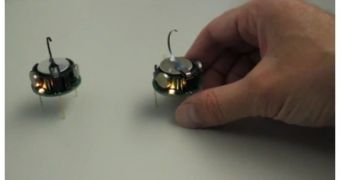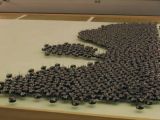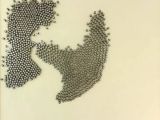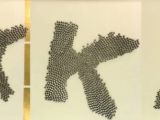Most of the materials we published lately about robots emphasized how much we still had to learn and do before a real automaton could be created, especially one that could walk and run properly. Now, though, let's have a look at the latest success in robotic science.
Researchers from a laboratory at Harvard University have created a swarm of 1,024 robots that can act in concert to writing or drawing two-dimensional shapes.
You might be tempted to say that this is nothing new, until you reach the part where the robots can do it without human guidance.
Sure, a human has to use an infrared transmitter to issue a command, but the robot swarm can do everything from there, just by communicating with one another.
The Harvard researchers have decided to call the new robots Kilobots, alluding to the number of bots that make up the swarm as it were.
When placed on a large tabletop, the Kilobots were able to draw a solid square, a star, a wrench, and the letter K, among other things. Presumably, they are, or will be in the future, capable of spelling words and sentences.
It would allow them, if nothing else, to be used as a means to write big words and letters visible from high up in the air, during a festival or whatever else.
Even if no practical uses ever come up, however, the Kilobots are a significant step forward in the field of collective artificial intelligence. After all, one thousand is a very large number and suggests a very efficient processing and interconnect algorithm.
Each Kilobot (1.2 inches / 30 mm wide, 2 inches / 50 mm tall) costs roughly $20 / €15 to make and has a very simple set of rules it functions by. Also, it has a receiver that lets it known what shape it and its many siblings have to form into.
Initially, the robots are arranged in a very tight, random shape on a flat surface, with four “seed robots” arranged in a cluster next to the swarm.
Once a command has been issued, the bots on the far side of the pack start to trudge their way around the formation, gravitating towards the seed bots thanks to the built-in motors (which also make them vibrate like phones on silent mode).
Over time, the whole swarm comes together around the four seed robots, creating the intended letter, geometric shape, or whatever other image the human operator decided to send out.
Even if the Kilobots and others like them don't end up gaining the ability to form a true hive mind, they will be good extensions for supercomputers or (human-like) automatons with true artificial intelligence.

 14 DAY TRIAL //
14 DAY TRIAL // 



